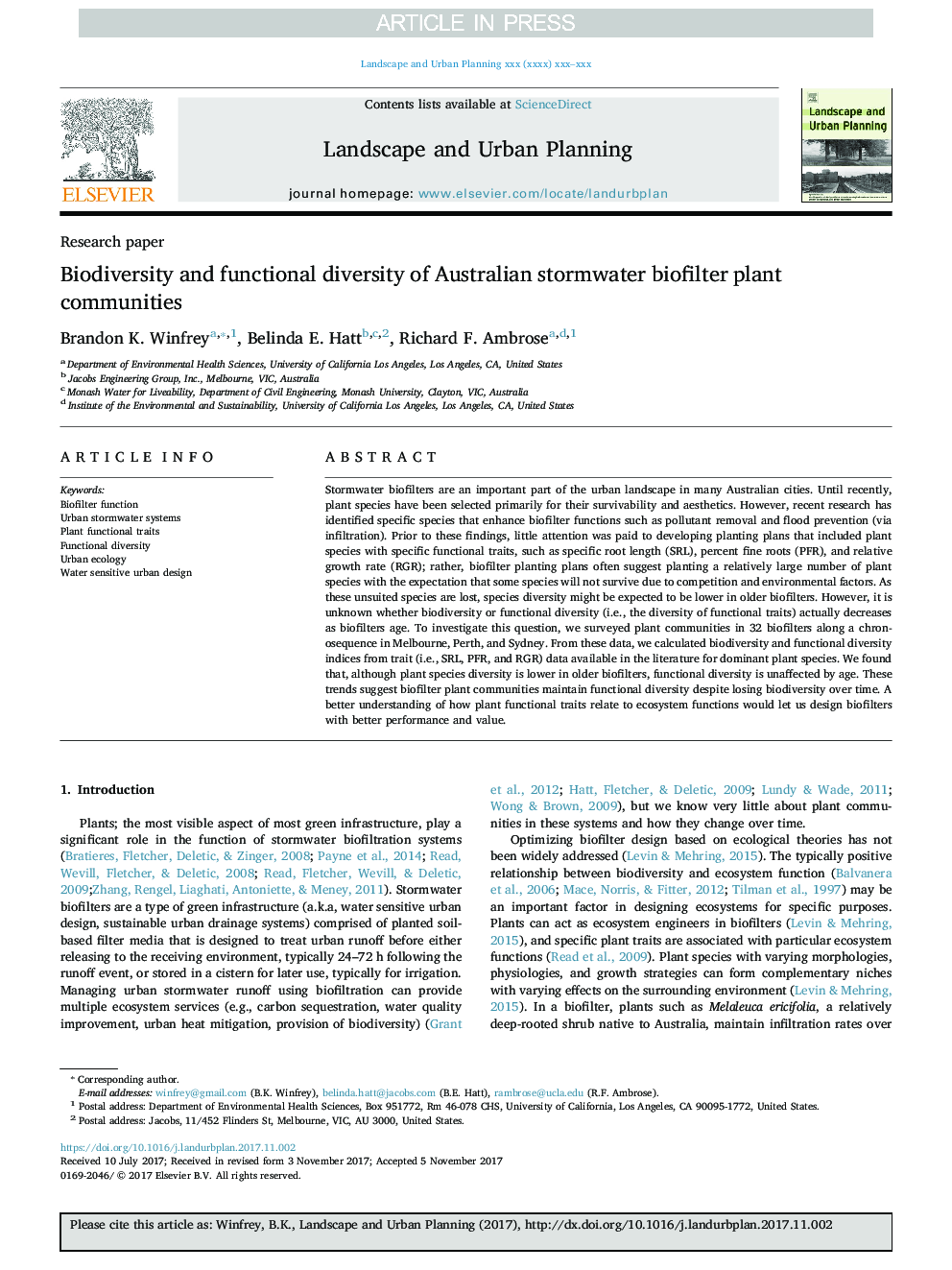| Article ID | Journal | Published Year | Pages | File Type |
|---|---|---|---|---|
| 7460015 | Landscape and Urban Planning | 2018 | 26 Pages |
Abstract
Stormwater biofilters are an important part of the urban landscape in many Australian cities. Until recently, plant species have been selected primarily for their survivability and aesthetics. However, recent research has identified specific species that enhance biofilter functions such as pollutant removal and flood prevention (via infiltration). Prior to these findings, little attention was paid to developing planting plans that included plant species with specific functional traits, such as specific root length (SRL), percent fine roots (PFR), and relative growth rate (RGR); rather, biofilter planting plans often suggest planting a relatively large number of plant species with the expectation that some species will not survive due to competition and environmental factors. As these unsuited species are lost, species diversity might be expected to be lower in older biofilters. However, it is unknown whether biodiversity or functional diversity (i.e., the diversity of functional traits) actually decreases as biofilters age. To investigate this question, we surveyed plant communities in 32 biofilters along a chronosequence in Melbourne, Perth, and Sydney. From these data, we calculated biodiversity and functional diversity indices from trait (i.e., SRL, PFR, and RGR) data available in the literature for dominant plant species. We found that, although plant species diversity is lower in older biofilters, functional diversity is unaffected by age. These trends suggest biofilter plant communities maintain functional diversity despite losing biodiversity over time. A better understanding of how plant functional traits relate to ecosystem functions would let us design biofilters with better performance and value.
Related Topics
Life Sciences
Agricultural and Biological Sciences
Ecology, Evolution, Behavior and Systematics
Authors
Brandon K. Winfrey, Belinda E. Hatt, Richard F. Ambrose,
